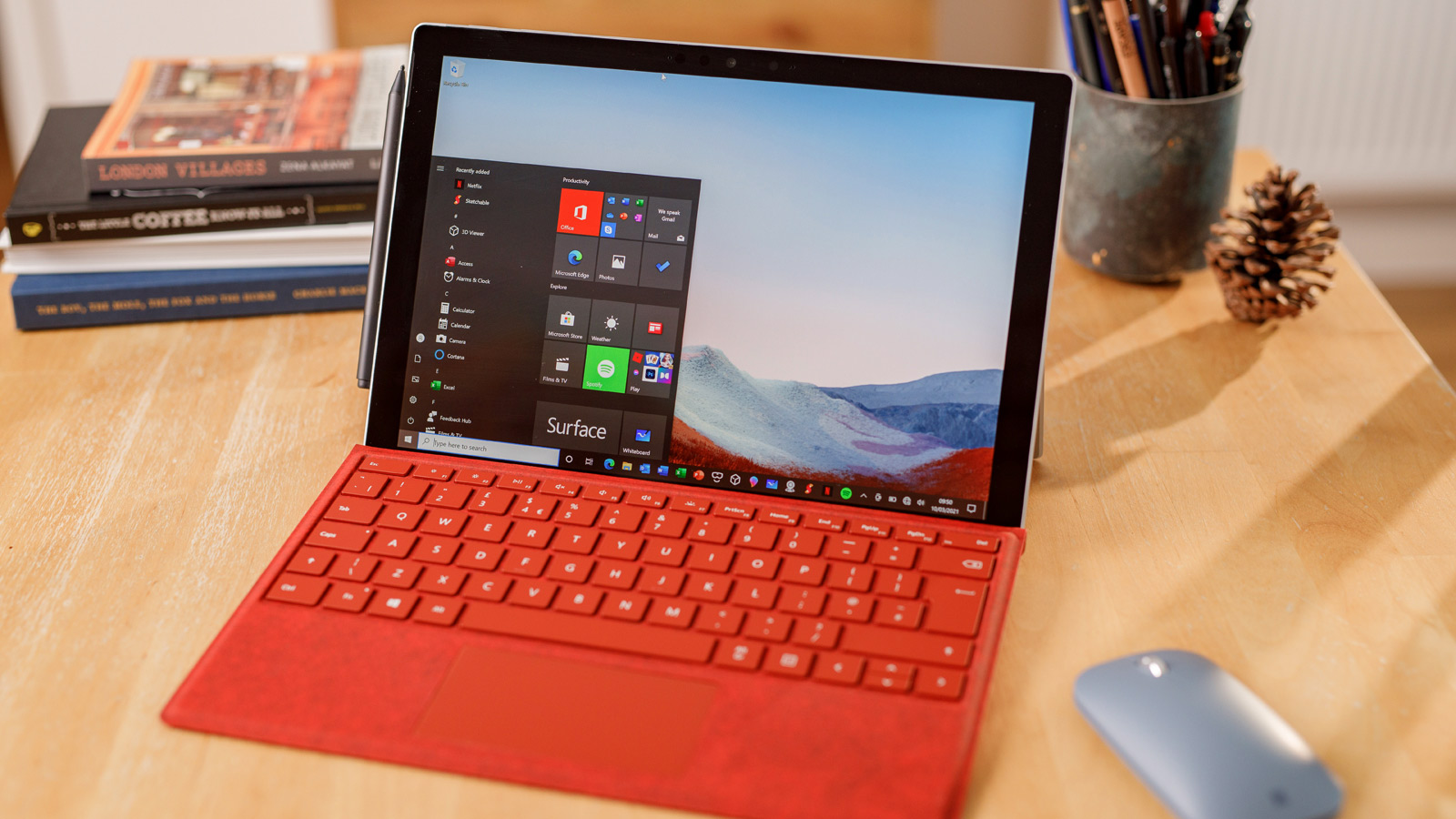[ad_1]

A decade ago, Microsoft was overwhelmingly considered by most as a software company. The Redmond-based tech giant had dabbled in hardware before with two Xbox consoles, but Windows was still its most recognisable product by far.
In June 2012, Microsoft set its sights on changing that. 37 years after it was founded, then-CEO Steve Ballmer announced the company’s first ever PC. Known simply as ‘Surface’, it shunned traditional laptop design in favour of a tablet (running Windows, of course) with a detachable keyboard. Similar devices had been revealed at CES a year earlier, but it was a risky move for a debut product.
It certainly wasn’t a failure, but did little to convince people that 2-in-1 devices were the future. Similarly, few truly believed at the time that Microsoft would become a hardware heavyweight. The likes of Acer, Dell and Lenovo were all far more experienced, with years of making computers under their belt.
The original Surface RT isn’t too dissimilar to the latest Pro 8.
Microsoft
But, as we’ve learnt countless times since, underwhelming first-gen products doesn’t mean future iterations can’t be successful. The very first Surface Pro launched less than four months later, complete with optional keyboard cover and a full version of Windows 8. The company quickly released follow-ups to both devices, before expanding the range with the Surface Book in 2015.
Despite adopting a more traditional laptop design, the Surface Book was still a 2-in-1 device thanks to a detachable display (or should that be detachable keyboard?). The Surface Hub – an interactive whiteboard – and the designer-focused Surface Studio launched around the same time, but more portable devices were fast becoming Microsoft’s speciality.
Demand for a thin-and-light laptop was satisfied with the Surface Laptop in 2017, before the reintroduction of an affordable Windows tablet a few months later – the Surface Go. By this stage, there was a Surface PC for everyone.
However, it was around this time that a now-infamous article from The Register was published, declaring that 2019 would be the year “Microsoft quits Surface hardware”. Incredibly, Canalys CEO Steve Brazier doubled down on this prediction in 2018, but the Surface range has only grown since then.
An October 2019 event was the most significant evidence of this, with a new ARM-based Surface Pro X joined by two dual-screen foldables. The Surface Neo never went on sale, but the Surface Duo saw Microsoft embrace Android for the first time.
The Surface Duo and Duo 2 are unlike any previous Microsoft devices.
Dominik Tomaszewski / Foundry
It didn’t stop there: the affordable Surface Laptop Go arrived in 2020, before the education-focused Surface Laptop SE launched a year later. Indeed, there’s still time for Microsoft to surprise us with a brand-new product before 2022 is out.
Surface in 2022: An successful, lucrative business
Microsoft might have taken a $900m hit on the original Surface, but the range has long since become very profitable. The company’s quarterly earnings surpassed $2 billion at the end of 2020, and they’ve continued to grow since then.
Despite having ten core products to choose from in 2022, each serves a different type of customer:
Surface Pro – premium, large Windows tablet with detachable keyboard Surface Pro X – ARM-based Windows tablet with detachable keyboard Surface Go – more affordable, smaller Windows tablet with detachable keyboard Surface Laptop – premium, thin and light clamshell laptop Surface Laptop Go – more affordable thin and light clamshell laptop Surface Laptop Studio – 3-in-1 premium hybrid laptop Surface Laptop SE – education-only basic laptopSurface Duo – dual-screen Android smartphone Surface Studio – premium all-in-one desktop Surface Hub – interactive whiteboard
Aside from the Duo, none of the Surface products are revolutionary. And apart from the Pro 8 (and even that’s a maybe) none are even best-in-class. Nevertheless, Surface has become the Windows equivalent of Apple’s MacBook, despite more competition than ever before.
What does the future hold for Surface?
So much has changed since the original Surface made its debut in 2012, making it impossible to predict how the next ten years will pan out.
Microsoft’s influence on the PC market is likely to continue to grow, and there’s more chance of it adding new products than culling any of the existing range. The one exception could be the ARM-based Surface Pro X, which may become a version of the Surface Pro 9 rather than a standalone device.
The Surface Pro X has received only minor updates since its initial launch.
Dominik Tomaszewski / Foundry
Looking further ahead, expect Microsoft to continue investing heavily in foldables. Recent patents suggest the company is considering a reverse folding design and three screens on a single device.
There’s no guarantee any new products will be a success, but the Surface range is now robust enough to deal with any failures. As it continues to innovate, Microsoft will face fierce competition from rival tech companies, which can only be a good thing for consumers.
Interested in buying a new Surface device now? Our full guide to the best Microsoft Surface runs through everything you need to know. We also have a round-up of the best Surface deals that’s well worth reading if you’re after a discount.
[ad_2]
Source link




